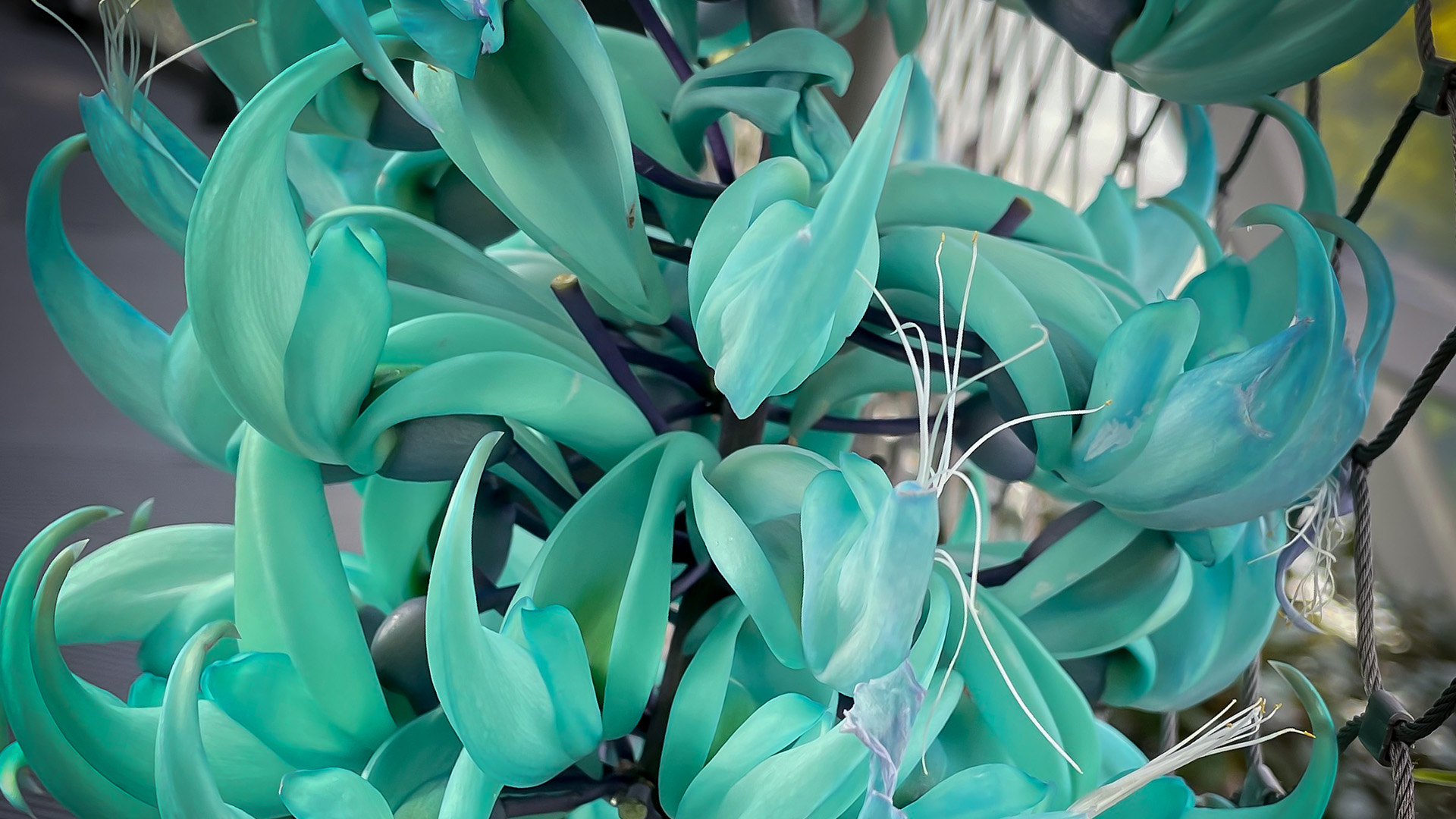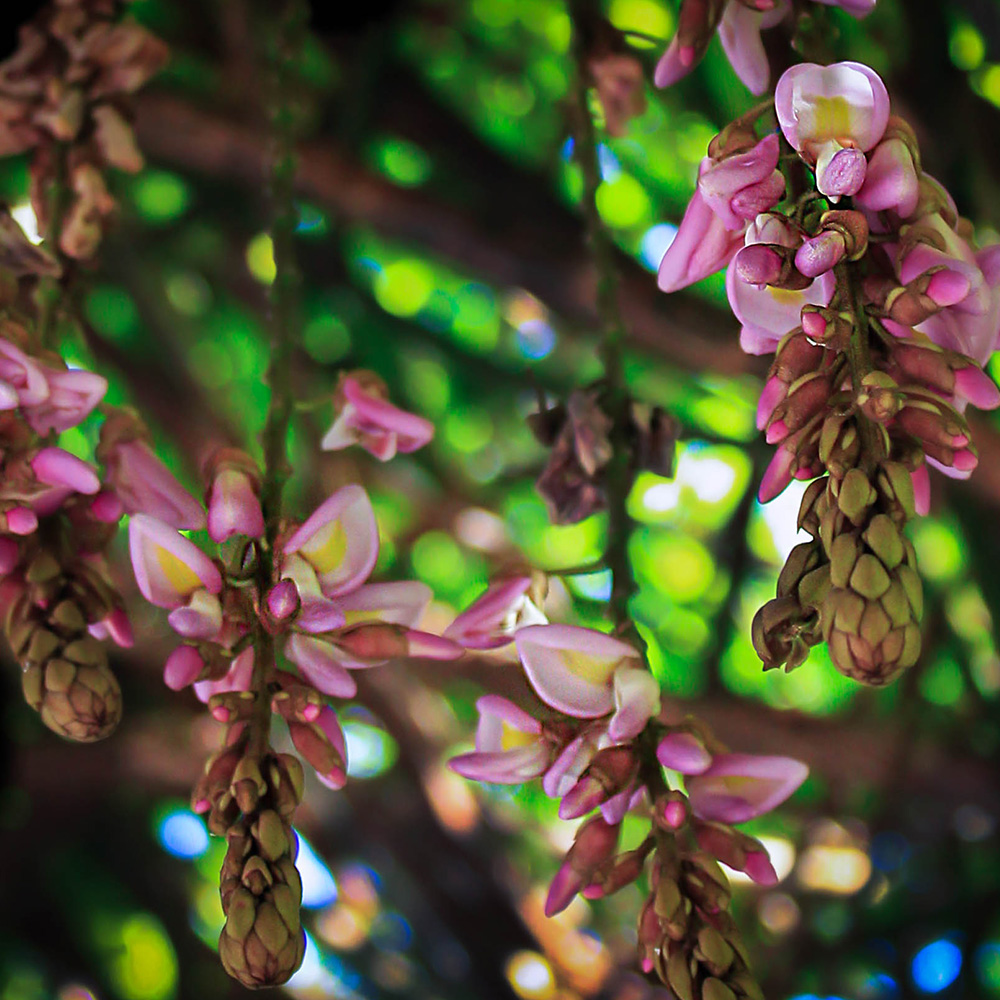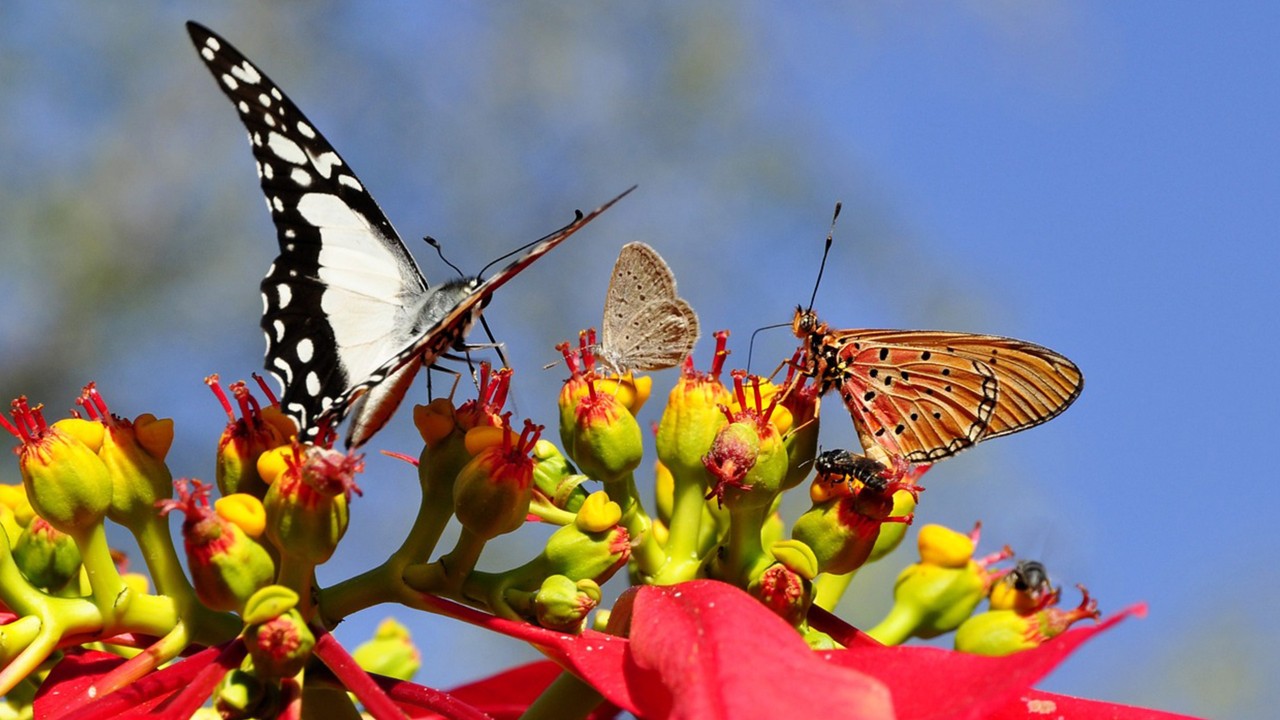 Close-up of male and female organs of Poinsettia flowers with its pollinators.
Close-up of male and female organs of Poinsettia flowers with its pollinators.
Wild poinsettia is native to Mexico and Central America, a tall shrub or small tree that blooms in December, and can grow up to 3-4m in height. The poinsettia inflorescence consists of tiny cup-shaped clusters of yellowish-green male and female flowers (termed ‘cyathia’). The coloured leafy parts are not petals, but bracts or modified leaves which turn colour in response to the plant forming flowers. Poinsettias are monoecious, having male and female flowers on the same plant. Although a female flower may be pollinated with pollen from the same plant, more often than not it is cross-pollinated through pollinators such as birds and insects that are attracted to the large, coloured bracts. Furthermore, male and female flowers emerge and mature at different times, reducing the chance of self-pollination and allowing for maximum cross-pollination.
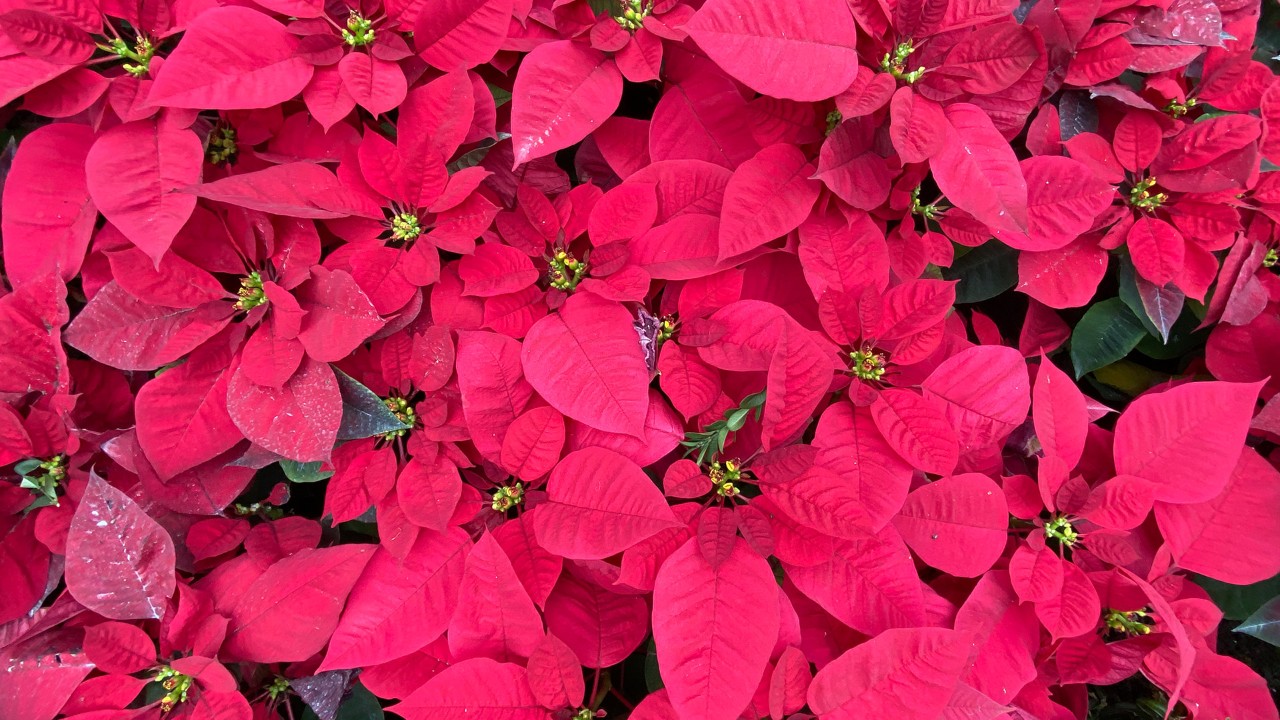 Classic, all-red poinsettia remains the all-time favourite colour!
Classic, all-red poinsettia remains the all-time favourite colour!
Poinsettias are part of the Euphorbiaceae family which consist of several horticulturally important species but Euphorbia pulcherrima is by far the most economically significant. All the early poinsettia had red bracts which only retained its colouration for a few days. Today’s varieties are more compact, durable and long-lasting with red still being the most popular colour even though new varieties are being developed yearly. These hundreds of varieties come in a range of colours from pink, salmon, apricot to yellow, cream and white. Some even feature unusual speckled or marbled patterning with several colours on the same bract.
Short days and long nights trigger poinsettia to start producing flowers. Horticulturally, poinsettia is a qualitative short-day plant grown not for its true flowers but for its coloured bracts. Reproductive development and bract colouration are induced by keeping the plants in darkness for at least 12 hours per day and providing temperatures in an optimum range of 15-21°C. Once poinsettias finish this process, they will then require abundant light during the day for the brightest colour.
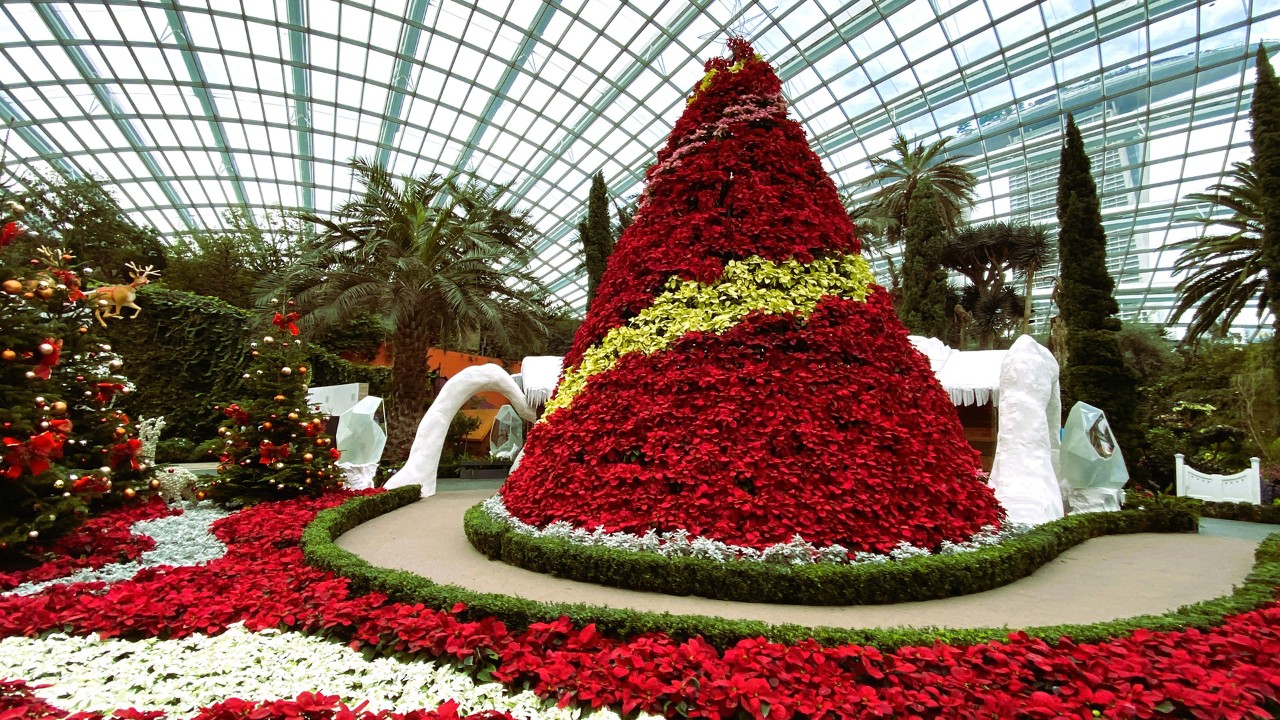 Poinsettia Decor for Holiday Spirit!
Poinsettia Decor for Holiday Spirit!
In the 14-16th centuries, the Aztecs used the poinsettia bracts to dye fabric and the sap for medicinal purposes. In present-day Mexico, it is called the ‘Flower of the Holy Night’ due to its resemblance to the Star of Bethlehem. There, poinsettia was often used to decorate churches for centuries and was traditionally part of religious ceremonies as the red colour is a symbol of purity in the Aztec culture.
Dr. Joel Roberts Poinsett, an amateur botanist and the first United States ambassador to Mexico, saw the plant in Mexico and introduced it to America in 1828. Named in his honour, poinsettias have since become part of America’s Christmas decor and a favourite holiday plant. Its popularity spread through Europe as a valuable potted plant since the early 1960s and today, the whole world is able to admire this beautiful plant. So, come and view them in the Seasons of Bloom display in the Flower Field, and indulge in the festive mood!
Written by: Ziana Yacob, Senior Manager (Research and Horticulture)
Ziana's fascination with the many wonders of plants led her to study Horticulture. She has been involved in propagating and nurturing in-house plant collections, with a special focus on orchids. Keeping plants thriving is both a rewarding challenge and a continuous journey of learning for her!
